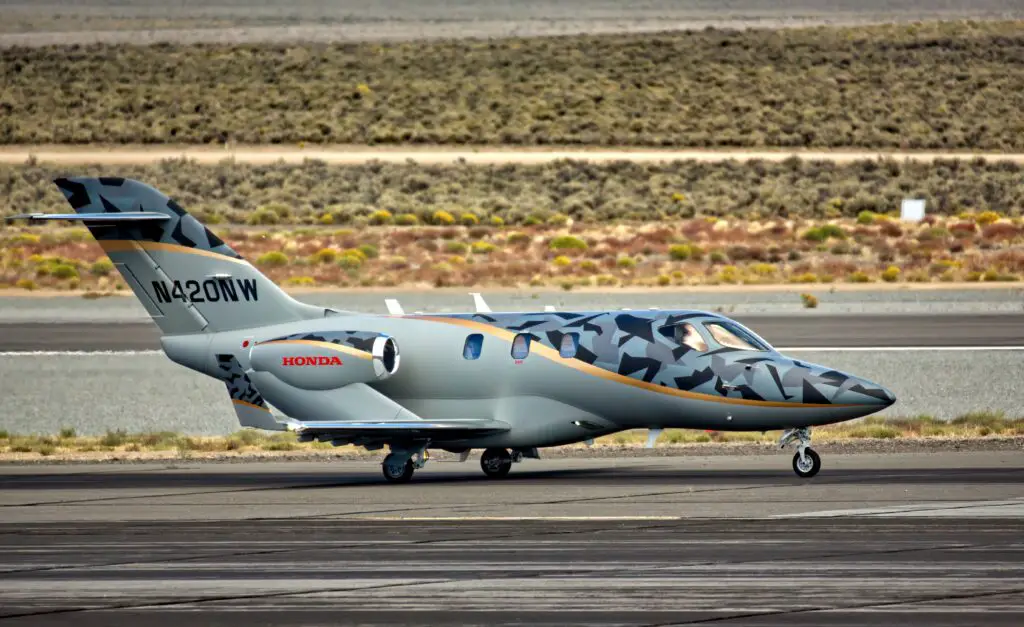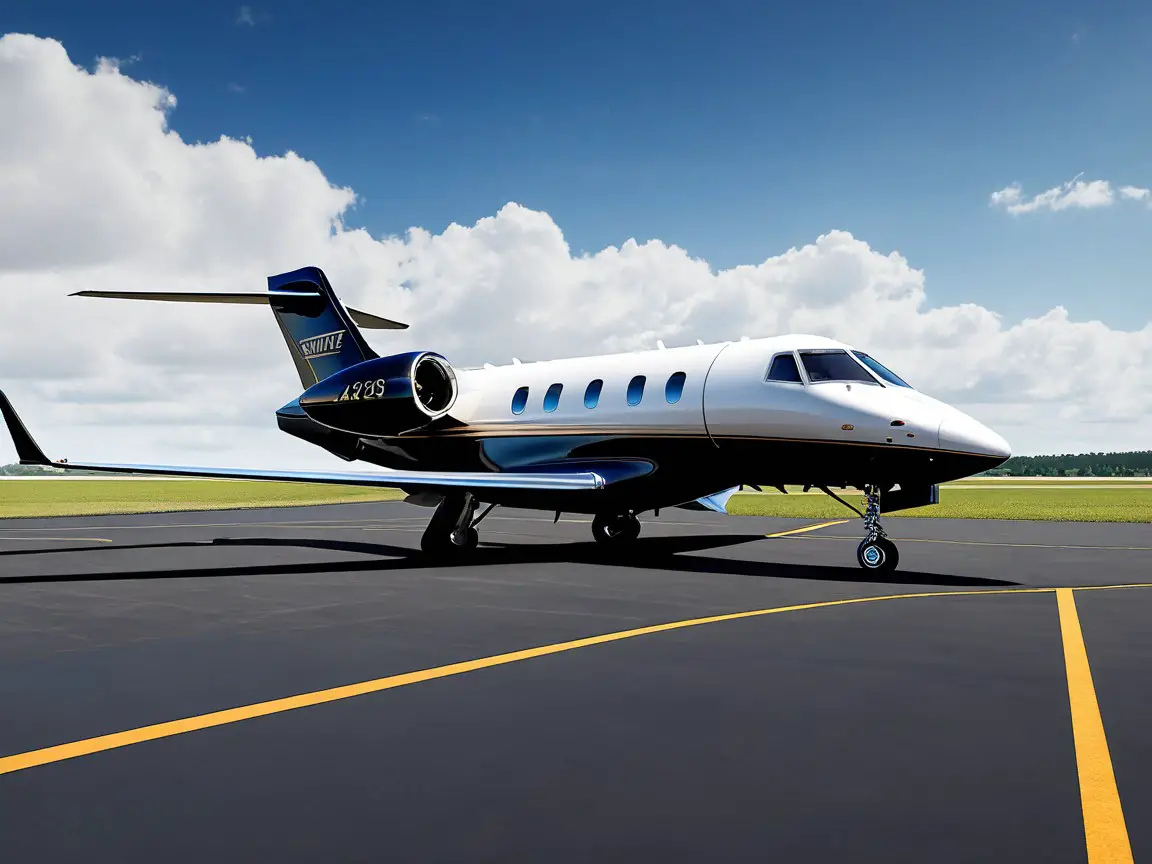How long does kerosene burn? Understanding the burn duration of kerosene as jet fuel is essential for flight planning and safety.
Kerosene, used as jet fuel, typically burns for several hours, depending on the aircraft’s size and engine efficiency. Still wondering how long does kerosene burn? Keep reading.
Contents
The longevity of kerosene as a fuel source significantly impacts aircraft performance and efficiency.
Pilots and aviation engineers rely on accurate knowledge of how long kerosene burns to ensure smooth operations.
One vital aspect to consider when discussing the burn duration of kerosene is its autoignition temperature.
This refers to the minimum temperature required for the fuel to ignite without an external ignition source.
By understanding this crucial threshold, aviation professionals can determine the optimal conditions for safe and efficient combustion.
We will explore the implications of burn duration on flight planning, engine design, and overall safety measures within the aviation industry.

Key Differences Between Jet A, Diesel, and Gasoline Combustion
Understanding the combustion characteristics of different fuels is crucial for optimizing engine design and fuel efficiency.
Each fuel type, such as Jet A, diesel, and gasoline, has its own unique properties that affect how it burns.
Distinct Combustion Characteristics
Jet A, diesel, and gasoline have distinct combustion characteristics due to their chemical composition.
- Jet A: It is a type of kerosene-based fuel specifically designed for jet engines. It undergoes a process called vaporization before combustion occurs. This means that it needs to be heated to a certain temperature to convert into gas form and mix with air before igniting.
- Diesel: Diesel fuel is commonly used in diesel engines found in trucks and heavy machinery. It has a higher energy density compared to gasoline or Jet A. Diesel combustion relies on compression ignition rather than spark ignition. The high compression ratio inside the engine causes the air-fuel mixture to heat up rapidly, leading to autoignition.
- Gasoline: Gasoline is the most commonly used fuel in internal combustion engines for cars and motorcycles. It has a lower energy density compared to diesel but is more volatile. Gasoline requires spark ignition from spark plugs to initiate combustion.
Ignition Temperatures
The ignition temperature refers to the minimum temperature at which a fuel-air mixture can ignite spontaneously without an external flame source.
Different fuels have different ignition temperatures:
- Jet A: It has a relatively high flash point (temperature at which it produces enough vapor for ignition) of around 38°C (100°F). However, its autoignition temperature (temperature at which it ignites without an external flame) is much higher at around 210°C (410°F).
- Diesel: Diesel fuel also has a high flash point of about 52°C (125°F) but a lower autoignition temperature of approximately 256°C (493°F).
- Gasoline: Gasoline has a lower flash point of about -45°C (-49°F) and an autoignition temperature of approximately 246°C (475°F).
Flame Propagation Rates
Flame propagation rate refers to the speed at which the flame front spreads through the fuel-air mixture during combustion. Different fuels exhibit different flame propagation rates:
- Jet A: Jet A fuel has a relatively slow flame propagation rate due to its higher viscosity and lower volatility compared to gasoline or diesel.
- Diesel: Diesel combustion occurs in a controlled manner with a moderate flame propagation rate.
- Gasoline: Gasoline, being more volatile, has a faster flame propagation rate than both Jet A and diesel.
Understanding these differences in ignition temperatures and flame propagation rates is essential for designing engines that can efficiently burn specific fuels.
It allows engineers to optimize engine parameters such as compression ratio, spark timing, and fuel injection strategy.

Exploring the Secrets Behind Jet Fuel Burning Processes
The combustion process of jet fuel is a fascinating and intricate one. It involves a complex interaction between fuel, air, and heat.
Understanding the secrets behind how long kerosene burns as jet fuel can lead to advancements in engine technology and emissions reduction in the aviation industry.
Factors that Influence Jet Fuel Burning
Several factors come into play. Let’s take a closer look at some of these influential factors:
- Turbulence: The presence of turbulence in the combustion chamber affects how efficiently jet fuel burns. Turbulence promotes better mixing of fuel and air, leading to more complete combustion.
- Pressure: The pressure within the combustion chamber also plays a role in determining how quickly jet fuel burns. Higher pressure can result in faster burning rates, while lower pressure may slow down the combustion process.
- Temperature: The temperature at which jet fuel burns significantly impacts its burning rate. Higher temperatures generally lead to faster combustion, while lower temperatures can slow it down.
Advancements in Jet Fuel Technology
Studying these secrets behind jet fuel burning processes has paved the way for advancements in engine technology and aviation fuels. Here are some notable developments:
- Improved Combustion Efficiency: Researchers have been working on enhancing the efficiency of jet engines by optimizing the combustion process. This includes developing new injector designs that enhance fuel-air mixing and promote more complete combustion.
- Reduced Emissions: By understanding how different factors affect jet fuel burning, scientists have been able to develop cleaner-burning fuels with reduced emissions of pollutants like nitrogen oxides (NOx) and particulate matter (PM). These advancements contribute to reducing environmental impact.
- Enhanced Energy Content: Efforts are underway to increase the energy content of aviation fuels by modifying their chemical composition or blending them with alternative fuels like biofuels or synthetic fuels derived from renewable sources. This can lead to improved fuel efficiency and longer flight ranges.
Implications for Aircraft Engines
The secrets behind jet fuel burning processes have direct implications for aircraft engines, particularly turbine engines commonly used in commercial aviation.
Understanding these factors allows engineers to design more efficient and reliable engines. Some key implications include:
- Increased Performance: By optimizing the combustion process, aircraft engines can achieve higher thrust levels and improved overall performance. This translates into faster acceleration, better climb rates, and increased payload capacity.
- Extended Engine Lifespan: Proper understanding of jet fuel burning processes helps engineers develop engine designs that minimize wear and tear caused by inefficient combustion or excessive heat generation. This leads to longer-lasting engines with reduced maintenance requirements.

Jet Fuel vs Diesel vs Gasoline: Understanding Their Unique Combustion Characteristics
Jet fuel, diesel, and gasoline are all types of fuels that power various types of engines. While they are all hydrocarbons.
Meaning they are made up of carbon and hydrogen atoms, their molecular structures result in different combustion properties.
It is important to understand these distinctions in order to select the appropriate fuel for specific applications.
Jet Fuel Burns at Higher Temperatures
One key difference between jet fuel, diesel, and gasoline lies in their combustion temperatures.
Jet fuel burns at higher temperatures compared to diesel or gasoline due to its higher carbon content.
This higher carbon content allows for a more efficient combustion process within jet engines.
Different Fuel Types for Different Applications
Recognizing the unique characteristics of each fuel type is crucial when choosing the right one for a particular application.
Here’s a breakdown of the main differences:
Jet Fuel
- Designed specifically for use in jet engines.
- Provides high energy density, allowing aircraft to travel long distances.
- Contains additives to prevent freezing at high altitudes.
- Typically has a lower flash point compared to other fuels.
Diesel
- Primarily used in diesel engines found in trucks, boats, and generators.
- Provides good fuel efficiency and torque.
- Ignites through compression rather than spark ignition.
- Has a higher flash point compared to gasoline.
Gasoline
- Used in spark ignition engines found in cars and motorcycles.
- Offers quick ignition and produces high power output.
- Has a lower flash point compared to diesel or jet fuel.
- Generally more volatile than diesel or jet fuel.
Considerations When Choosing Fuel
When selecting the appropriate fuel for an application, several factors need to be taken into account:
- Fuel Consumption: The amount of fuel needed per unit of work performed can vary between different fuels. It’s essential to consider the overall efficiency and cost-effectiveness of the fuel.
- Engine Type: Different engines have specific requirements. Ensuring compatibility between the fuel and engine is crucial for optimal performance.
- Environmental Impact: The environmental impact of different fuels can vary greatly. Factors such as greenhouse gas emissions, air pollution, and sustainability should be considered when making a choice.
- Availability: The availability of a particular fuel type can vary depending on location and infrastructure. It’s important to ensure that the chosen fuel is readily accessible for refueling purposes.

The True Colors of Jet Fuel, Diesel, Kerosene and Gasoline Flames
Different fuels produce flames with distinct colors due to variations in chemical composition. This means that when you set them on fire, they burn differently and display different colors.
For example, jet fuel flames tend to have a blue coloration compared to the yellowish flames of diesel or gasoline.
Identifying flame colors is not just about aesthetics; it can actually help in identifying potential leaks or irregularities during combustion.
By understanding the unique characteristics of each fuel’s flame color, we can better assess the safety and efficiency of their usage.
Flame Colors: A Window into Combustion
When certain flammable liquids like kerosene, diesel fuel, gasoline, or jet fuel are ignited in an open flame, they exhibit specific colors due to their chemical makeup.
The color of a flame provides valuable information about the temperature and efficiency of combustion.
- Jet Fuel Flames: Jet fuel is primarily derived from crude oil and is designed specifically for use in jet engines. When ignited, it produces a blue-colored flame. This blue hue indicates that the combustion process is occurring at high temperatures.
- Diesel and Gasoline Flames: On the other hand, diesel and gasoline are commonly used as fuels for automobiles. When these fuels burn, they produce yellowish flames. These flames indicate that the combustion process is occurring at lower temperatures compared to jet fuel.
Why Flame Color Matters
The color of a flame can be indicative of various factors related to its combustion process:
- Flame Temperature: Different fuels burn at different temperatures. The maximum flame temperature for jet fuel can reach up to 2,500 degrees Celsius (4,500 degrees Fahrenheit), while diesel and gasoline have lower maximum flame temperatures.
- Flash Point: The flash point refers to the lowest temperature at which a liquid gives off enough vapor to form an ignitable mixture in the air. Jet fuel has a relatively high flash point, making it less volatile compared to diesel and gasoline, which have lower flash points.
- Pollutants: The color of a flame can also give insights into the presence of pollutants. For instance, a yellow flame may indicate incomplete combustion, resulting in the release of carbon monoxide and other harmful substances.
Safety Considerations
Understanding flame colors is essential for safety reasons, especially when handling flammable liquids:
- Leak Detection: If you notice a different or unusual flame color when using kerosene, diesel fuel, gasoline, or jet fuel, it could be an indication of a leak or irregularity in the combustion process. In such cases, it is crucial to investigate further and address any potential safety concerns promptly.
- Temperature Control: Flame color can help gauge the temperature at which combustion is occurring. This information is valuable for controlling and optimizing processes that rely on burning these fuels.
- Fuel Blending: Different types of fuels can be blended together to achieve specific properties or meet certain requirements. By understanding how each fuel burns and its associated flame color, experts can determine the ideal blend ratios for optimal performance.

Investigating the Longevity of Kerosene As A Jet Fuel Burner
Extensive research has been conducted to examine the duration of kerosene combustion as a jet fuel source.
Several factors, such as ambient conditions and engine design, play a crucial role in determining how long kerosene can sustain its burn.
Factors Affecting Kerosene’s Burn Duration
The longevity of kerosene as a jet fuel burner is influenced by various factors. One key factor is the ambient conditions in which the fuel is being burned.
Temperature, humidity, and air pressure can all impact the burning efficiency and duration of kerosene.
For instance, colder temperatures may cause kerosene to burn slower or even extinguish prematurely.
Engine design also plays a significant role in determining how long kerosene can burn as a jet fuel source.
The combustion process within an engine involves carefully controlled airflow and fuel injection.
The design of the engine’s combustion chamber and fuel delivery system affects the efficiency and duration of kerosene combustion.
Engineers continuously strive to optimize these designs for improved performance and safety.
Importance for Flight Safety and Efficiency
Understanding the longevity of kerosene as a jet fuel burner is crucial for ensuring flight safety and efficiency. Pilots rely on consistent and reliable combustion throughout their flights.
If kerosene were to burn out unexpectedly or inconsistently during flight, it could lead to engine failure or other dangerous situations.
Efficiency is another critical aspect when considering how long kerosene burns as a jet fuel source. Airlines aim to maximize their fuel usage while minimizing costs.
By understanding how long kerosene can sustain its burn, airlines can plan their refueling schedules more accurately.
Avoiding unnecessary stops or carrying excess weight in additional fuel.
Research Findings on Kerosene’s Burn Duration
Researchers have conducted numerous tests to determine the burn duration of different types of kerosene under various conditions.
These tests involve measuring the time it takes for kerosene to burn completely or extinguish. The results provide valuable insights into the behavior of kerosene as a jet fuel source.
In addition to laboratory testing, researchers also consider real-world scenarios and weather performance.
They examine how kerosene performs in different climates and under varying weather conditions.
This research helps identify any potential challenges or limitations associated with using kerosene as a jet fuel burner.

Analyzing the Emissions of How Long Does Kerosene Burn As Jet fuel
The burning time of kerosene as jet fuel has a significant impact on emissions, including carbon dioxide and pollutants.
Understanding how long kerosene burns can help us evaluate its environmental effects and develop strategies to reduce the environmental impact of aviation.
Longer burn durations can lead to increased emissions
When kerosene burns for longer periods as jet fuel, it results in increased gas emissions.
Carbon dioxide (CO2), which is a greenhouse gas responsible for climate change, is released during combustion.
The longer the burn duration, the more CO2 is emitted into the atmosphere. This prolonged burning contributes to global warming and exacerbates environmental concerns.
Impact on environmental concerns
Analyzing these emissions is crucial because they directly affect our environment.
Increased levels of CO2 trap heat in the atmosphere, leading to rising temperatures and changes in weather patterns.
This phenomenon, known as global warming, has severe consequences such as melting ice caps, rising sea levels, and extreme weather events like hurricanes and droughts.
Furthermore, prolonged burning of kerosene as jet fuel also releases other pollutants into the air.
These include nitrogen oxides (NOx), sulfur oxides (SOx), and particulate matter (PM).
These pollutants contribute to air pollution and have detrimental effects on human health and ecosystems.
Developing strategies for reducing environmental impact
Understanding how long kerosene burns as jet fuel allows us to develop strategies aimed at reducing its environmental impact.
By finding ways to decrease burn durations or exploring alternative fuels with shorter burn times, we can significantly minimize emissions.
Some potential strategies include:
- Improving engine efficiency: Enhancing aircraft engines’ design can increase fuel efficiency, resulting in shorter burn durations and reduced emissions.
- Transitioning to sustainable alternatives: Exploring renewable energy sources like biofuels or electric propulsion systems can help reduce reliance on fossil fuels and decrease emissions.
- Implementing stricter regulations: Governments and international organizations can establish stricter emission standards for aviation, encouraging the adoption of cleaner technologies and fuels.
By analyzing the emissions associated with how long kerosene burns as jet fuel, we can make informed decisions to protect our environment.
It is crucial for stakeholders in the aviation industry, including airlines, manufacturers, and policymakers.
To work together towards sustainable solutions that minimize emissions and mitigate climate change.

Unraveling the Mysteries of How Long Does Kerosene Burn As Jet fuel
Scientists are constantly engaged in investigating the intricate factors that influence how long kerosene burns as jet fuel.
Their research aims to uncover mechanisms that optimize combustion efficiency and reduce waste, contributing to advancements in aviation technology and sustainability.
Investigating Factors Influencing Burn Duration
The burn duration of kerosene as jet fuel is influenced by various factors that scientists are diligently studying. These factors include:
- Chemical Composition: The specific blend of hydrocarbons in kerosene affects its burning characteristics. Scientists analyze different compositions to identify the optimal balance for efficient combustion.
- Air-Fuel Ratio: Achieving the right mixture of air and fuel is crucial for sustained and efficient burning. Researchers work to determine the ideal ratio that maximizes burn duration while minimizing emissions.
- Temperature and Pressure: The conditions under which kerosene burns significantly impact its duration. Scientists investigate how temperature and pressure affect combustion efficiency, enabling them to develop strategies for better control over burn duration.
- Fuel Atomization: Efficient atomization, or breaking down of liquid fuel into small droplets, is essential for complete combustion. Scientists explore methods to improve atomization, ensuring better mixing with air and enhancing burn duration.
Optimizing Combustion Efficiency and Reducing Waste
Understanding how long kerosene burns as jet fuel allows scientists to develop strategies for optimizing combustion efficiency while reducing waste.
This has several benefits:
- Improved Fuel Economy: By maximizing burn duration, aircraft engines can achieve greater fuel economy, resulting in reduced costs for airlines and decreased environmental impact.
- Reduced Emissions: Longer burn durations lead to more complete combustion, resulting in lower emissions of pollutants such as carbon monoxide (CO), nitrogen oxides (NOx), and unburned hydrocarbons (HC). This contributes to cleaner air and improved air quality.
- Enhanced Safety: By studying burn duration, scientists can develop safer fuel systems that minimize the risk of uncontrolled combustion or flameouts, ensuring the safety of aircraft and passengers.
- Sustainable Aviation: Optimizing burn duration supports sustainability efforts in the aviation industry by reducing fuel consumption and greenhouse gas emissions. This aligns with global initiatives to mitigate climate change and promote greener transportation.
Advancements in Aviation Technology
Unraveling the mysteries of how long kerosene burns as jet fuel contributes to advancements in aviation technology. This includes:
- Engine Design: Understanding burn duration allows engineers to design more efficient engines that maximize performance while minimizing environmental impact.
- Alternative Fuels: Research into burn duration helps identify alternative fuels that offer longer burning times and reduced emissions compared to conventional kerosene-based jet fuels. These alternatives include biofuels derived from renewable sources like algae or plant matter.
- Efficient Combustion Systems: By optimizing combustion efficiency, scientists can develop advanced combustion systems that enhance engine performance, reduce maintenance needs, and extend engine life.

Conclusion
In conclusion, the burning duration of kerosene as jet fuel is influenced by various factors.
The combustion characteristics of jet fuel, diesel, and gasoline differ significantly due to variations in their chemical compositions.
Understanding these distinctions is crucial for optimizing engine performance and ensuring safety in aviation.
Through our exploration, we have delved into the secrets behind jet fuel burning processes and uncovered the true colors of jet fuel, diesel, kerosene, and gasoline flames.
As you continue your quest for knowledge about how long kerosene burns as jet fuel, it is important to consider the environmental impact.
Analyzing emissions produced during combustion can provide valuable insights into the sustainability of using kerosene as a burner.
By unraveling these mysteries and staying informed about advancements in alternative fuels, we can contribute to a greener future for aviation.
If you found this information helpful and want to learn more about aviation fuels or related topics, feel free to explore our other articles.
Stay curious and keep seeking answers that will help us make informed decisions regarding aircraft operations.
FAQs
1. Is kerosene the only type of fuel used in jet engines?
Jet engines primarily use a specific type of kerosene called Jet A or Jet A-1. However, certain military aircraft may use alternative fuels like JP-8 or JP-5 based on specific requirements.
2. Can I use regular gasoline instead of jet fuel in an emergency situation?
Using regular gasoline instead of jet fuel is extremely dangerous and should never be attempted. Gasoline has different properties than jet fuel and can cause severe damage to the engine or even lead to catastrophic failure.
3. How does the burning duration of kerosene compare to other types of fuels?
Kerosene typically has a longer burn time compared to gasoline due to its higher energy density. Diesel also burns slower than gasoline but faster than kerosene. These variations in burn duration are influenced by the chemical composition and combustion characteristics of each fuel type.
4. Are there any alternatives to kerosene as jet fuel?
Researchers and industry experts are actively exploring alternative fuels for aviation, including biofuels derived from renewable sources such as algae or plant oils. These alternative fuels aim to reduce greenhouse gas emissions and reliance on fossil fuels.
5. Does the burning duration of kerosene affect flight efficiency?
The burning duration of kerosene can impact flight efficiency to some extent, as it affects the overall energy output of the engine. However, other factors like engine design, aircraft weight, and aerodynamics play a more significant role in determining flight efficiency.







Leave a Reply